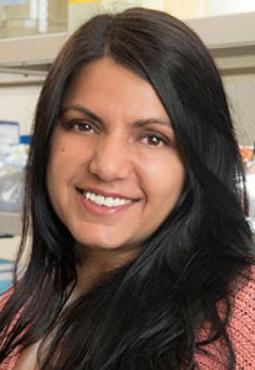At the recent 82nd Scientific Sessions of the American Diabetes Association held June 3-7 in New Orleans, City of Hope researchers presented new ways in which they are seeking to advance and personalize treatment of types 1 and 2 diabetes. Scientists from the Arthur Riggs Diabetes & Metabolism Research Institute shared five oral abstracts and discussed data in four poster presentations.

Research by Sangeeta Dhawan, Ph.D., assistant professor in the Department of Translational Research & Cellular Therapeutics, addressed the key question of how healthy pancreatic beta cells form, mature, survive and function optimally by examining DNA methylation. Hung-Ping Shih, Ph.D., an assistant professor in the Department of Translational Research & Cellular Therapeutics, spoke on how 3D imaging is revealing the secrets of islet cell architecture.

Leading-edge type 2 diabetes data presented in talks by postdoctoral fellow Xuekai Xiong, Ph.D.; Lei Jiang, Ph.D., assistant professor in the Department of Molecular & Cellular Endocrinology; and Qiong (Annabel) Wang, Ph.D., associate professor in the Department of Molecular & Cellular Endocrinology, included how the circadian clock affects metabolism and insulin resistance by inducing or repressing beige fat development; how molecular factors influence whether cold exposure leads to the burning of brown fat (the “calorie-burning” type of fat); and a new way of understanding why people tend to gain fat as they get older (along with novel potential treatment targets). The last study, by Wang, identified unique, age-related fat cell progenitors.
In a poster presentation, postdoctoral fellow Eryun Zhang, Ph.D., explored ways to improve the bioavailability of berberine derivatives, which have promise as anti-diabetes agents that work by positively affecting the gut microbiome. Berberine — a chemical derived from plants such as European barberry, goldenseal, goldthread, Oregon grape, phellodendron and tree turmeric — has been used to treat type 2 diabetes in animal models as well as in human clinical trials, while offsetting renal, cardiovascular, hepatic and respiratory risks, but has poor bioavailability. Structural modifications could enable it to obtain pharmacological properties as well as help uncover its underlying mechanisms of action. In her research, Zhang was able to successfully synthesize natural and non-natural novel berberine derivatives that could potentially have better bioavailability and thus potency.

Research presented by Patrick Fueger, Ph.D., associate professor in the Department of Molecular & Cellular Endocrinology, identified a novel molecular target to treat insulin resistance: hepatic epidermal growth factor receptor (EGFR). Activation and expression of EGFR are reduced in obese people. Fueger’s study demonstrated that restoring EGFR activation in obesity-induced type 2 diabetes is a potential therapy to improve liver function and metabolism.
Amar Reddy, Ph.D., associate research professor in the laboratory of Rama Natarajan, Ph.D., Department of Diabetes Complications & Metabolism, looked at the role of epigenetics in turning on pro-inflammatory genes that lead to chronic inflammation and the subsequent development of T2D and cardiovascular disease. Postdoctoral fellow Vinay Tanwar, Ph.D., also from the Natarajan lab, took a gene-based approach, exploring the role of long non-coding RNAs induced by palmitic acid on the resolution of such chronic inflammation (high levels of circulating palmitic acid are associated with obesity and diabetes).